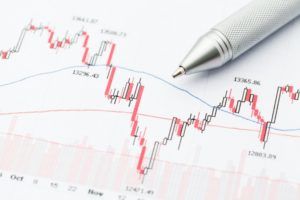Gold and The Monte Carlo Simulation
Posted onHow do you plan for uncertainty?
This question has plagued investors since the beginning of time. Moreover, it is an inherent challenge for most people attempting to build their long-term wealth because outpacing inflation means making your money grow with equities, bonds, or commodities, all of which represent levels of uncertainty.
The problem, however, is more specific than mere uncertainty. After all, investors expect occasional drops in the value of their assets. The serious problem occurs when the most remote possibilities rise to the surface and threaten ruin. These scenarios, which are improbable but not impossible, could conceivably eliminate nearly all of one’s holdings. Examples include outliers like:
- 1929: The Great Depression
- 1987: Black Monday
- 2007: The Global Financial Crisis
Most investors accept this possibility, but few know they can measure it with something called the Monte Carlo Simulation. This is a method of running an equation hundreds, thousands, or even millions of times with the help of a computer. Each time the computer runs the equation it does so by entering a new number for a particular variable. This approach allows the individual to understand and quantify the effect of uncertainty on an investment decision. This exercise is akin to living, and re-living a choice repeatedly and experiencing the range of outcomes.
After the Monte Carlo Simulator completes running the equation the requested number of times the full breadth of results are averaged so that the investor can begin to understand what could happen. This mathematical method of risk management has great potential for those attempting to construct a portfolio.
For gold investors, the Monte Carlo Simulation can offer insight into the durability of gold over the long-term. In the second half of this article we look at what a Monte Carlo Simulation tells us about the risk and return of gold in comparison to other investments.
A Monte Carlo Simulation shows that a $10,000 investment in gold over a period of 25 years using a “historical returns” simulation model has an expected annual return of 7.49% in the 50th percentile.
For comparison, running the same simulation for the same parameters but instead using global bonds as the selected asset class returned just 5.53%. Even using the broader category of commodities resulted in a 6.62% loss!
These figures begin to illustrate the range of outcomes an investor can anticipate as they formulate their portfolio. Simulations like these also offer other important numbers. The same parameters run for the emerging markets asset class point to annual returns of 6.48% with a historical standard deviation of 22.5% suggesting that uncertainty here runs high in comparison to the lower (20.0%) historical standard deviation seen for gold over an even longer period.
The Monte Carlo Simulation shows us that the game of risk is far more complex than most realize. It is only after running thousands of simulations that we begin to form a picture of what possibilities await.
Want to read more? Subscribe to the Blanchard Newsletter and get our tales from the vault, our favorite stories from around the world and the latest tangible assets news delivered to your inbox weekly.







